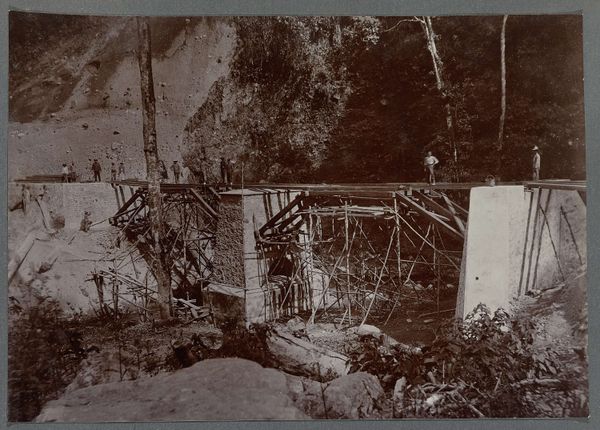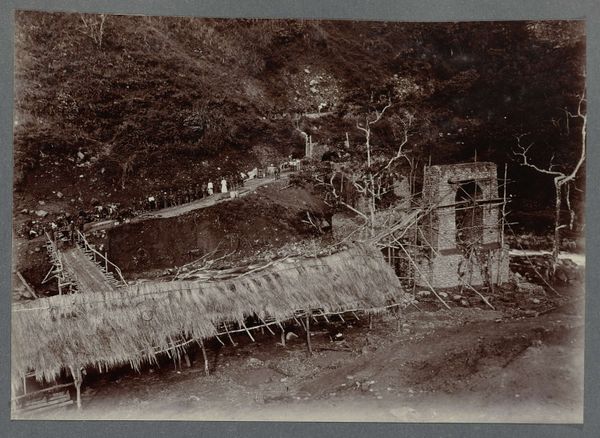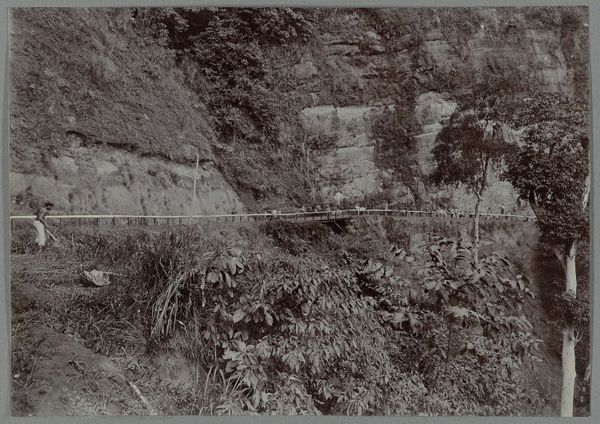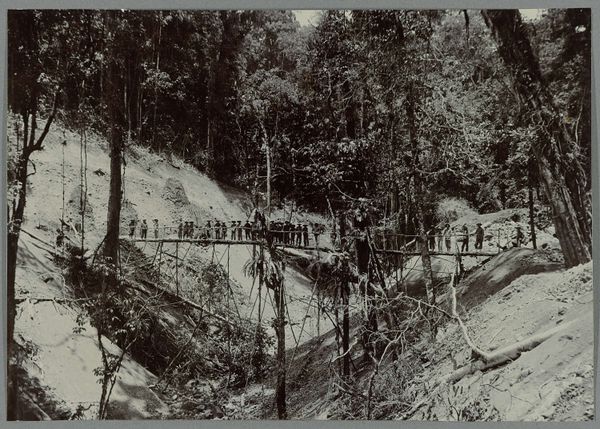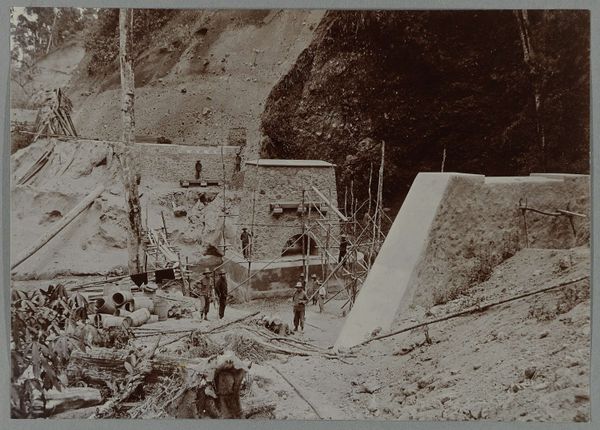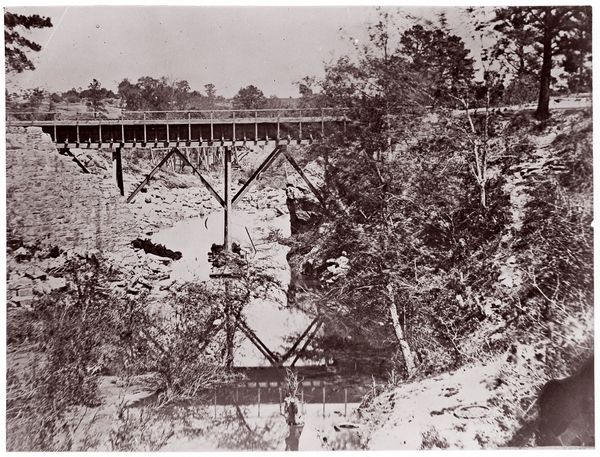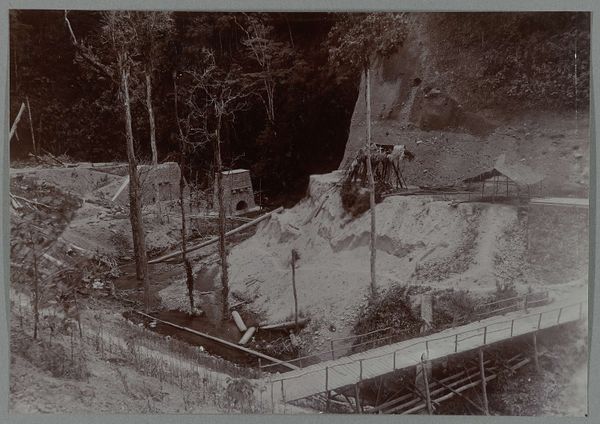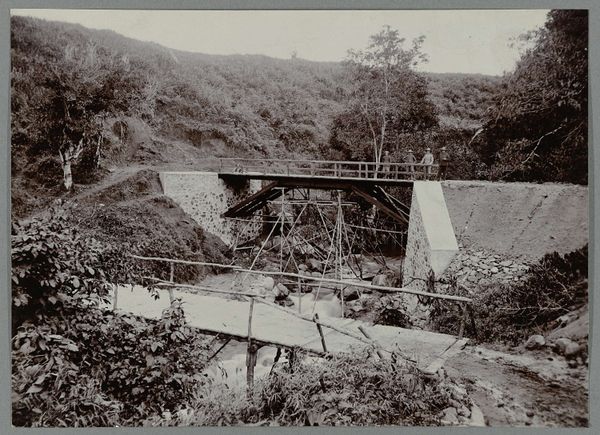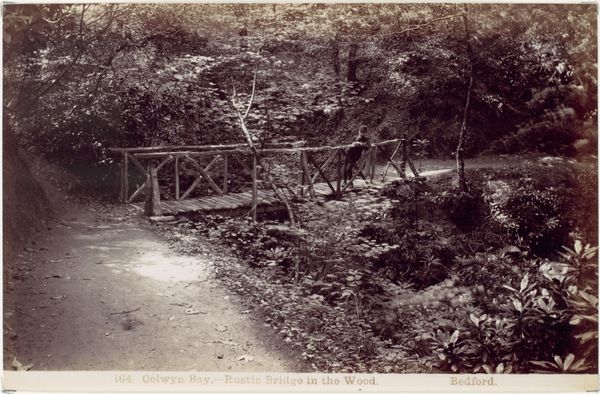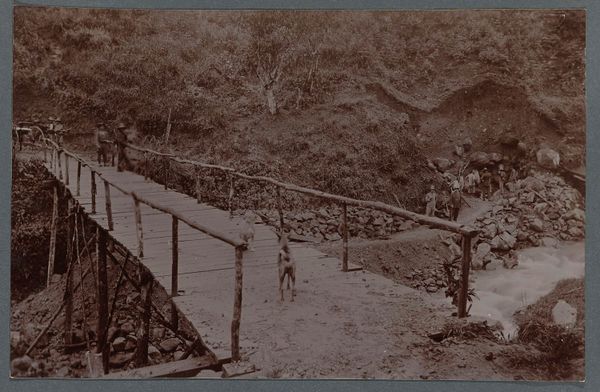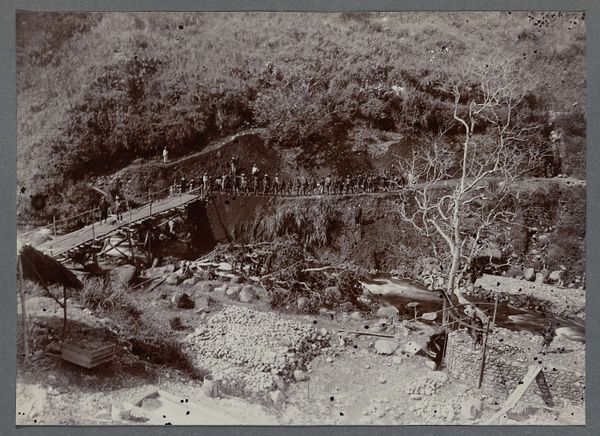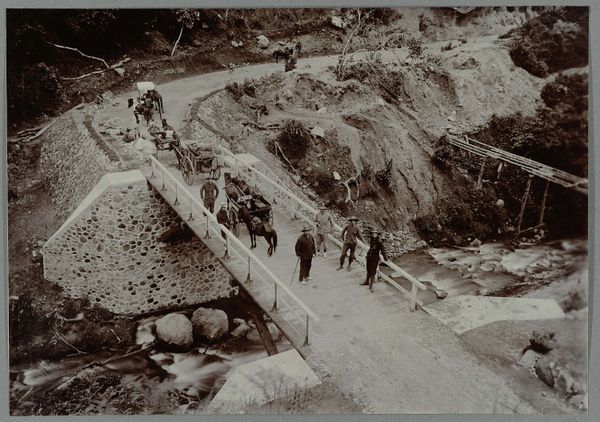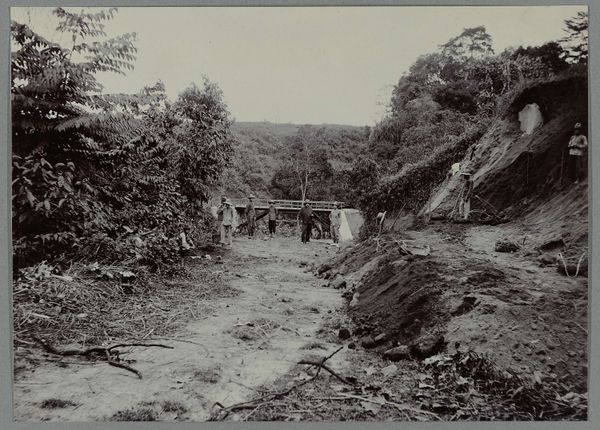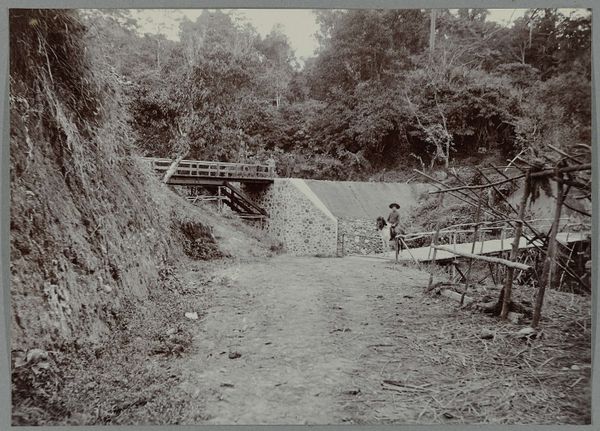
print, photography, site-specific, architecture
# print
#
landscape
#
photography
#
constructionism
#
site-specific
#
mixed medium
#
mixed media
#
watercolor
#
architecture
Dimensions: height 138 mm, width 200 mm
Copyright: Rijks Museum: Open Domain
Curator: The print, "Bouw van de brug over de Woih ni Enang," likely taken between 1903 and 1913, depicts the construction of a bridge. It is anonymous, a mixed-medium work involving photography. What are your first impressions? Editor: The landscape itself is compelling, but what really strikes me is the rawness of the bridge construction. The scaffolding is so exposed, and it really foregrounds the labor involved in the construction. What can we tell about its creation from its materials? Curator: Absolutely. We see timber used for scaffolding, locally sourced stone being pieced together… The very process is unveiled here. Instead of a glorification of architecture, this image lays bare the physical labor of constructing infrastructure, challenging the separation of manual labour from fine art. It reminds us of the workers and conditions often obscured in landscape painting. Does that framing make sense? Editor: Yes, it shifts my perspective considerably. Initially, I just saw the bridge itself. But focusing on the labor, who were the workers here, and what materials were available to them? That gives a very different read of what's in the frame. It's not just about the landscape but the cultural history of the landscape as a material. How was the labor organised? How were these materials sourced? Curator: Precisely! The construction becomes an artifact representative of human will imposing on the landscape and social dynamics related to how labour and materials are organized, especially in what seems to be a colonial context. Editor: I hadn't thought of the colonial aspect so directly, but seeing how the image brings material and labour to the front allows you to then explore the wider systems around it. It is pretty telling how different this lens can be for even considering this one scene, seeing past face value. Curator: Exactly, art isn't just what’s depicted but the hidden process itself, and more importantly, why!
Comments
No comments
Be the first to comment and join the conversation on the ultimate creative platform.
